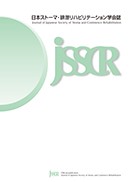Volume 36, Issue 3
Total 100
Displaying 1-11 of 11 articles from this issue
- |<
- <
- 1
- >
- >|
-
2020 Volume 36 Issue 3 Pages 64-83
Published: 2020
Released on J-STAGE: December 01, 2020
Download PDF (7466K)
-
2020 Volume 36 Issue 3 Pages 84-85
Published: 2020
Released on J-STAGE: December 01, 2020
Download PDF (759K)
-
2020 Volume 36 Issue 3 Pages 86-93
Published: 2020
Released on J-STAGE: December 01, 2020
Download PDF (705K) -
2020 Volume 36 Issue 3 Pages 94-99
Published: 2020
Released on J-STAGE: December 01, 2020
Download PDF (679K)
-
2020 Volume 36 Issue 3 Pages 100-105
Published: 2020
Released on J-STAGE: December 01, 2020
Download PDF (781K)
-
2020 Volume 36 Issue 3 Pages 106-113
Published: 2020
Released on J-STAGE: December 01, 2020
Download PDF (1036K) -
2020 Volume 36 Issue 3 Pages 114-120
Published: 2020
Released on J-STAGE: December 01, 2020
Download PDF (776K)
-
2020 Volume 36 Issue 3 Pages 121-126
Published: 2020
Released on J-STAGE: December 01, 2020
Download PDF (716K)
-
2020 Volume 36 Issue 3 Pages 127-130
Published: 2020
Released on J-STAGE: December 01, 2020
Download PDF (718K) -
2020 Volume 36 Issue 3 Pages 131-133
Published: 2020
Released on J-STAGE: December 01, 2020
Download PDF (660K)
-
2020 Volume 36 Issue 3 Pages 134
Published: 2020
Released on J-STAGE: December 01, 2020
Download PDF (570K)
- |<
- <
- 1
- >
- >|
